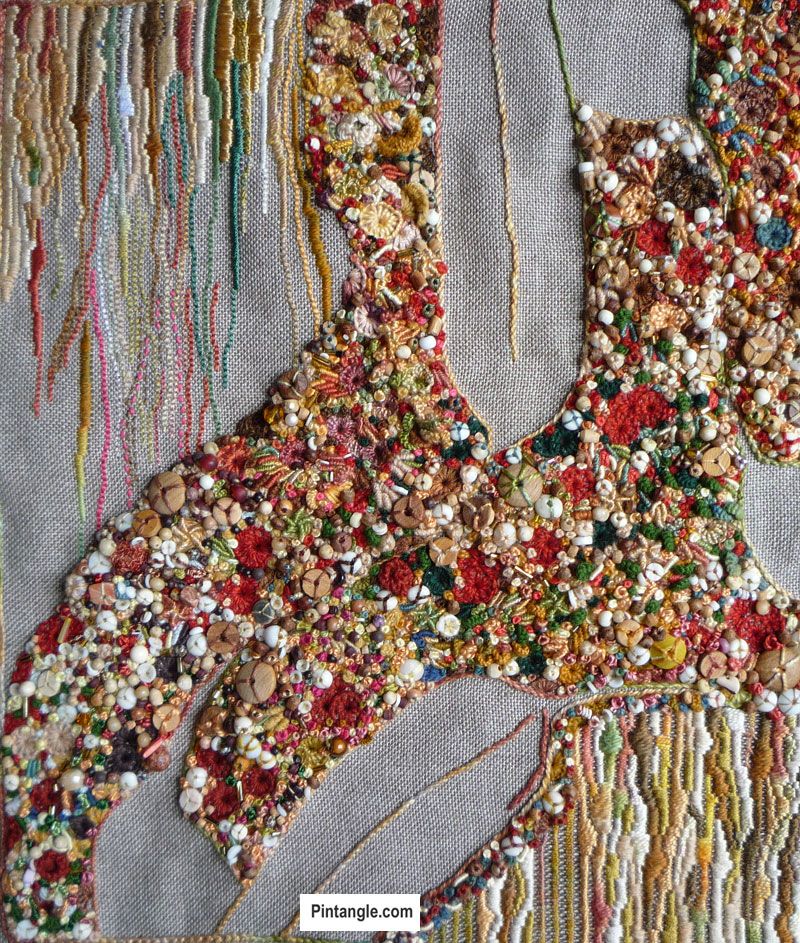
This is article I move from studio journal design to embroidered piece. This is an example of taking a design in my studio journal and stitching it. I will start with sharing a photo of the finished project.
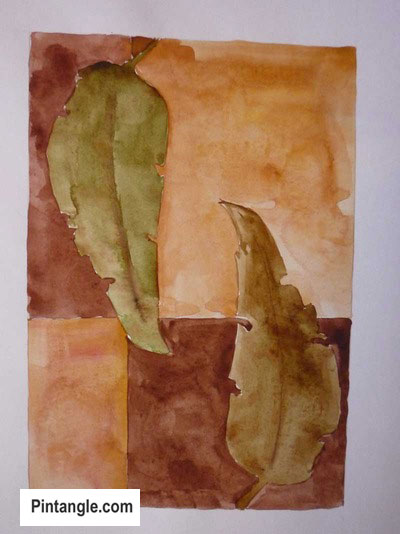
The source of the design
The idea for this project started because at the end of our street, we have a green belt that is being re-planted after the bush fires that hit Canberra in 2003. I had thought I might explore working a few little pieces associated with that area of land as it had seen some dramatic changes. The topic of the fires, the environment, global warming, the devastation, then the regrowth and the changes associated with the Canberra fires is large enough to be a series of works.
I was not sure I wanted to work a huge serious series of works but was exploring ideas in my studio journal. I decided I wanted to take it a step further and use my needle to apply the ideas in fabric and thread. Rather than launch into a series of full wall pieces I decided I would first work a small piece. It was a way of testing some of the the ideas I had without committing to a huge long process of a big work.
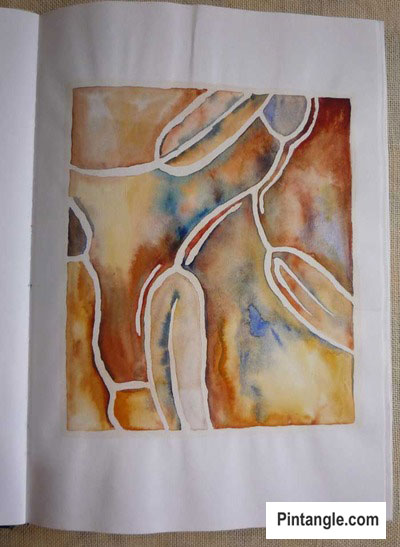
I started exploring imagery and patterns drawing summer grasses. After a long period of faffing about with these (not shown) I decided summer grasses did not really catch the mood of what I was thinking about. The fires were not mere little grass fires. They were forests ablaze that whipped up such heat they became a firestorm ripping through the suburbs taking nearly 500 homes with it. I decided to focus on a few remaining trees that survived the fires. These are gum trees.
At first I had an aversion to using such a cliche of an Australian gum leaf. But, the more I played with the idea, the more I felt they spoke of Australian summers and heat. I started with just a few individual leaves then after working about 20 designs the leaf shapes moved together producing the page above. When I saw it I decided that would be the design. I liked the composition so decided to use it but cropped it a little closer.
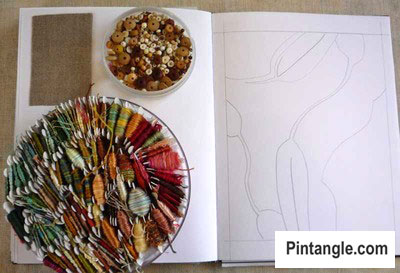
Starting out on the process of moving from studio journal design to embroidered piece I first chose the colour scheme. The colour scheme was relatively easy as I wanted it to be the colours of the Australian bush. Next I chose my threads. I chose chunky threads as I did not want delicate stitching. There is nothing delicate about the remains of a fire. Threads included were cotton perle #5 and #8. I also chose linen and cotton abroder threads which are dull. They do not have a sheen. I wanted earthy summer colours that felt natural, not threads that had a high sheen to them. A high sheen felt too decorative.
Going through my fabric stash I found a rough natural looking pieces of linen. The fabric I chose is a 26 count linen that is a jute fawn type of colour. This colour sat well with the natural theme of the design. The colour is nicer in life than in the photograph. Next I chose beads that were made of wood and shell. They were unpolished and in some cases a bit rough as once again I wanted a natural feel to the piece.
First I traced the page to produce a line drawing that I could use as a pattern. I then scanned the line drawing and on my computer scaled the drawing to a larger size. I used a window as light box to transfer the design to fabric ( a tutorial on how to do this is here) and started to stitch.
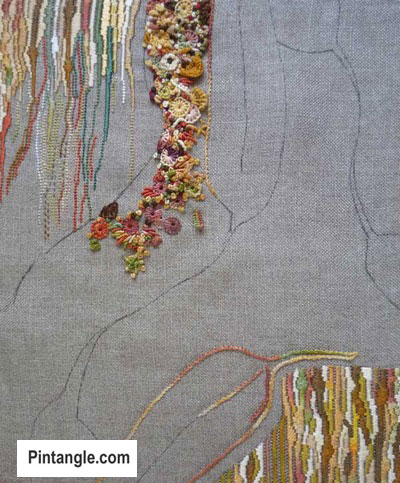
As you can see I have started to stitch. The top left and bottom right hand areas are stitched using Satin stitch, Padded Satin Stitch. The fine lines you can see are made with Back Stitch, and Running Stitch. I have started to outline the top leaf in Stem Stitch. The bottom leaf is outlined in a heavier linear stitch, whipped chain stitch. The textured surface stitches I am using are Bullion knots, French knots, Buttonhole wheels, Buttonhole Wheel Cups and Cast-on stitch. All of these stitches you can find in my Stitch Dictionary.
I added an edge to the piece, working chain stitch using a hand dyed cotton perle#5 thread. This was because I needed to contain the design, as I felt my eye and possibly my needle could drift over the margins. I also continued to outline the leaves in Stem Stitch and whipped chain stitch.

So with a ‘frame’ of sorts, I set about working areas and filling in the negative spaces. I continued working more of the top left hand area that are are stitched using Satin stitch, Padded Satin Stitch.

I added more fine lines of Back Stitch, and Running Stitch. These lines are not so busy as the textured stitches and give the eye a rest for the a moment.

I continued building the textured area with surface stitches I am using are Whipped Wheels, Bullion Knots, French Knots, Buttonhole wheels, Buttonhole Wheel Cups and Cast-on stitch.All of these stitches you can find in my Stitch Dictionary.
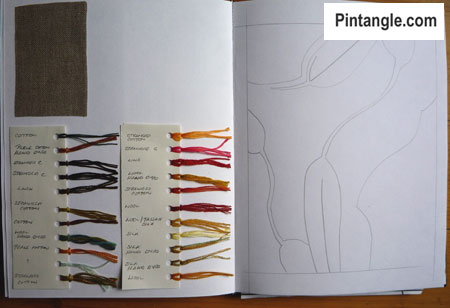
As I worked I made a sample card for the threads as I used them. This is my record keeping technique! I make the cards as I go otherwise I quickly forget what thread I have used where. It is useful to have the card to refer to if anyone asks me what threads I used. At this stage in the project I have used hand dyed cotton perle #5, linen, stranded cotton floss, wool, knitting yarn, a wool/tussah silk mix, and silk. Most of the threads were hand dyed by me using procion MX dyes.

Up until this stage I had been working on hoop and moving the hoop around. Eventually I get to the stage where I can not reposition the hoop without squashing stitches. It gets worse if I start adding beads. At this point in the process I usually stretch the embroidery frame. I dont really like frames, so I put it off as long as possible. As the pieces becomes heavier with the stitches and beads keeping an even tension is harder.

At this stage I concentrate on filling in the negative space areas with highly textured stitches. The areas are encrusted which is why I call it encrusted embroidery. The stitches I am using are Bullion Knots, French Knots, Buttonhole wheels, Buttonhole Wheel Cups, Whipped Wheels and Cast-on stitch. All of these stitches you can find in my Stitch Dictionary.
I thought people would like to see a detail of the hand embroidery and beads. The beads were all chosen for a natural finish to echo the natural design. The beads are made of wood and shell and are unpolished.

I hope you enjoy seeing this process from studio journal design to embroidered piece. Hopefully this article has given you a few ideas on how to approach designing a project like this. I also hope you have enjoyed reading about how I use textured stitches.
This is the completed piece. Click on the image to see a large version of the finished project.
My book for creative stitchers
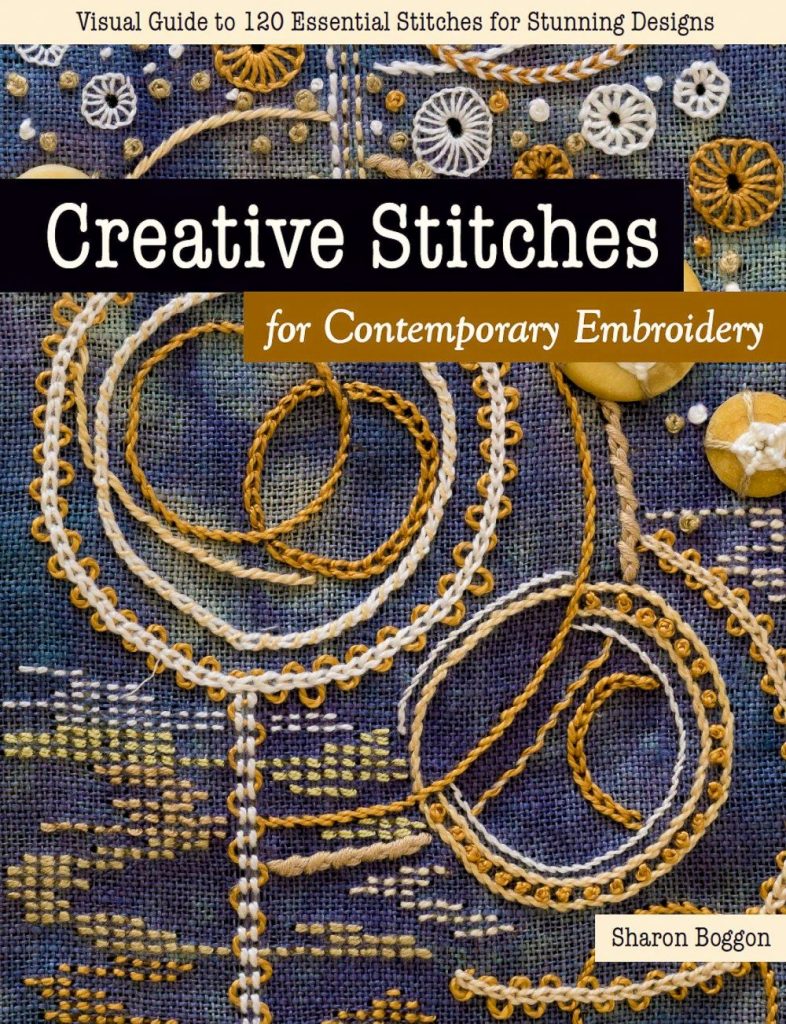
If you enjoy my site you will gain real value from my book: Creative Stitches for Contemporary Embroidery: Visual Guide to 120 Essential Stitches for Stunning Designs
Feeling stale? Wondering how to add sparkle to your embroidery? I have aimed Creative Stitches for Contemporary Embroidery to be suitable for both beginners and seasoned embroiderers. It introduces techniques to encourage your creative interpretations of stitches. I guide you towards discovering play-points in your embroidery by varying the height and width; by stacking stitches; or by filling multiple rows with the same stitch. With creative variations and demonstrations of tiny tweaks, You will be ready to head off down your own creative path and, of course, illustrated with plenty of eye candy!
Please note if you buy one of my books via this link as an Amazon Associate, I earn from qualifying purchases.

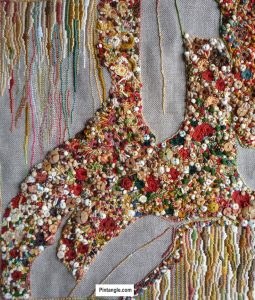

Sharon, I love this, it seems to be growing just like I can imagine the plant life coming back to life. It's just so beautiful and inspirational!!!
I love the 'bleeding' colours on your design work and the freehand stitching
Lovely compositions, Sharon. I do love our freehand stitch pieces!!
Gorgeous Sharon! I love the texture in your projects!
Very beautiful and complex!
I can see this becoming a masterpiece of embroider as is all of your work.. Seeing all the steps you take is really interesting, your sense of colour and deisign is absolutely outstanding….you are a wonderful inspiration for us all.
Thank-you for sharing the process from idea to journal to fabric. This is sooooooo valuable to me. I pulls everything from the Studio Journals class into perspective.
Sharon, is that a woven bar type stitch that you're using in the upper left and lower right? I love that ropey look.
I'm looking forward to seeing how this developes. It is interesting to see all the steps you have taken it thru.
Ricky
Hi Sharon,
This is my first time commenting on your blog. My! what an inspiration you are! I just love your work . Thank you for being so willing to share your knowledge, I do appreciate this so much. I too just love working with needle and thread and love a challege. This lastest embroidery of yours is again just amasing. The way you approach your design has given me a good idea of how to create my own design, thank you.
Thanks again
Maria.
Thank you for sharing your process. It is very inspirational as well, of course, as being beautiful.
Already beautiful as work in progress. I admire you! And I love the watercolours!
It's always good to see how design ideas change as they develop – and they'll change again as you stitch, I'm sure!
This is really gorgeous Sharon. Lovely to see how 'an expert' approaches design. I love the colours, but then I suppose I would love them, being a passionate Australian. Can't wait to see it when you complete the whole picture.
Thanks for sharing this, Sharon. It’s good to see it now, after your class is finished. If I was not stitching on Nefertiti I would be inspired now!